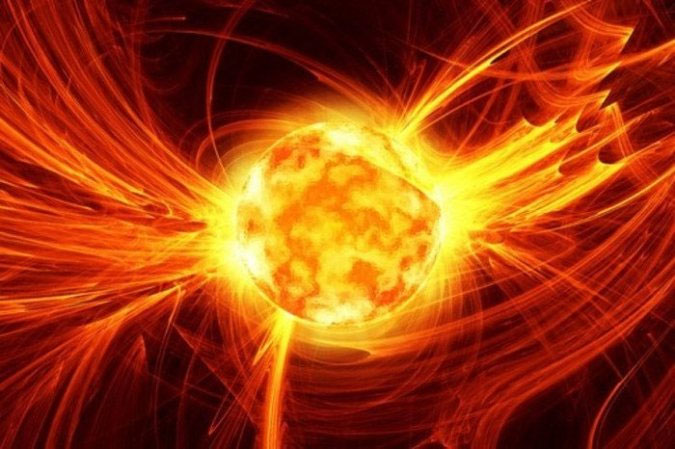What is fusion reaction?
The fusion reaction, or fusion reaction, nuclear fusion reaction in physics, is the process of two nuclei fusing together to create a heavier new nucleus. Along with this process is the release of energy or energy absorption depending on the mass of the nucleus involved.
Iron and nickel kernels have a higher connection power than all other kernels, so they are more sustainable than others. The nuclear combination of atoms is lighter than iron and nickel which releases energy while the heavier nuclei absorb energy.
Nuclear fusion is one of two types of nuclear reactions . The other is fission .

Nuclear fusion of heavy nuclei occurs in stellar explosions (supernova).
Nuclear fusion of light atoms produces stars' glow and causes hydrogen bombs to explode. Nuclear fusion of heavy nuclei occurs in stellar explosions (supernova). Nuclear fusion in stars and constellations is the process of producing natural chemical elements.
The fuel used in nuclear fusion is hydrogen deuterium and tritium isotopes . These isotopes can be easily extracted from seawater components, or synthesized inexpensively from hydrogen atoms.
To make the nuclei fit together, a huge energy source is needed, even for the lightest atoms such as hydrogen. This is explained by the fact that the reaction processes are difficult to perform: step 1 requires atomization of the molecules, complete ionization of all atoms, and separation of electrons to turn reactive fuel completely become a nucleus with no electrons in the plasma body. It is then necessary to provide extremely large kinetic energy for the nuclei to overcome the Coulomb repulsion interaction between them and collide. The necessary temperature can reach millions of degrees Celsius. But the combination of light atoms, to make heavier cores and release a free neutron, will release more energy than the energy charged at early when merging the nucleus. This leads to a release of energy that can produce a self-sustaining reaction. However, from the iron nucleus onwards, the synthesis of the nucleus becomes more heat-generating. The need for a lot of energy to start up usually requires raising the system temperature to high before the reaction occurs. It is for this reason that fusion reactions are also known as fusion reactions.
The energy released from nuclear reactions is often much larger than chemical reactions, because the binding energy keeps the nuclei much larger than the energy to hold electrons to the nucleus. For example, the energy to add 1 electron to the nucleus is equal to 13.6 eV, less than one millionth of the 17 MeV released from the DT reaction (deuterium-tritium, hydrogen isotopes).
- Control laser fusion reaction
- Fusion thermos are dozens of times faster than spacecraft
- Ambition to harness energy from fusion reactions
- The fusion furnace has a magnetic field 100,000 times stronger
- There is going to be unlimited clean energy thanks to nuclear reactions
- Grid fusion synthesis power in 2050
- The laser is capable of heating up to 15 million degrees Celsius
- Synthesis of nuclei with a distorted machine
- The new discovery could become a revolution in the nuclear energy industry
- Detecting new types of nuclear fusion reactions
- Superheated helium balloons,
- We have endless energy, but why haven't we used it yet?
 'Fine laughs' - Scary and painful torture in ancient times
'Fine laughs' - Scary and painful torture in ancient times The sequence of numbers 142857 of the Egyptian pyramids is known as the strangest number in the world - Why?
The sequence of numbers 142857 of the Egyptian pyramids is known as the strangest number in the world - Why? History of the iron
History of the iron What is alum?
What is alum?